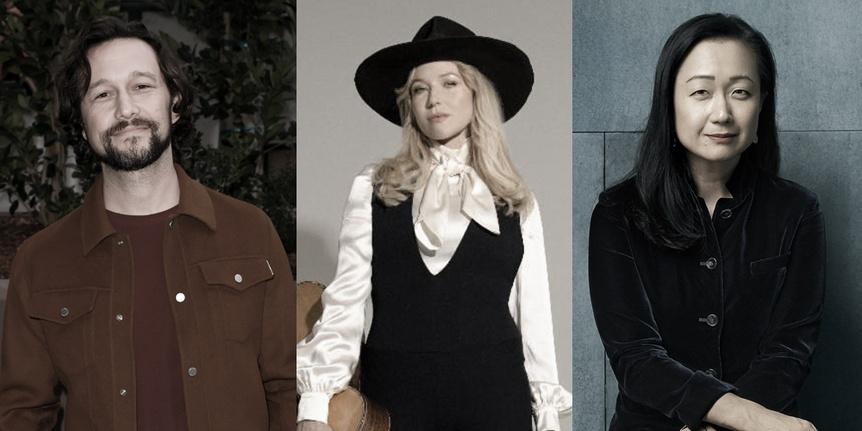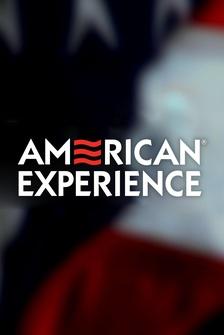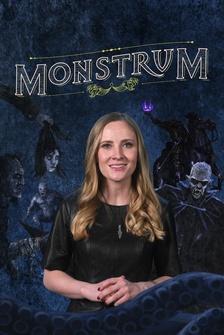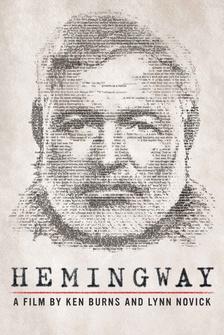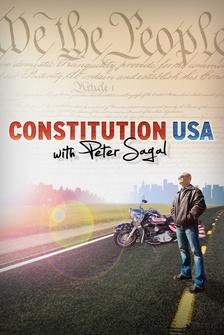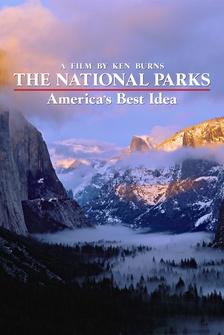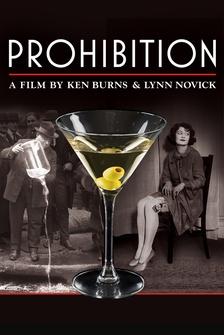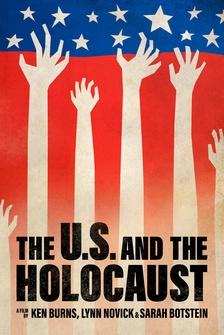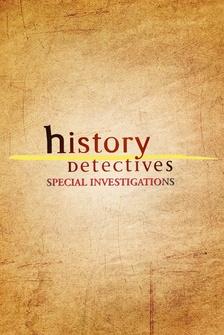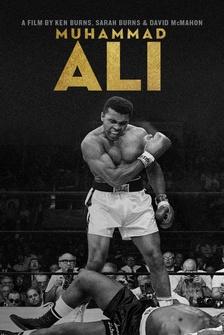(warm music) (warm music) - My mom had to help me in the third grade with a drawing exercise that basically was draw a happy face and draw a sad face and I remember not knowing how to do it.
My mom sat down with me.
She saw that I had been sitting there for a while and she was like, "Why don't you try this?"
And she'd draw two circles, and in one she put two dots and a smile and the other, she put two dots and a frown.
And I remember my little third grade brain, my mind was blown.
And I remember thinking, "I wanna learn how to draw like a great artist like my mom is."
(gentle music) (upbeat music) (upbeat music) Good mythology is so farfetched that there's no way you could have made it up so it has to come from somewhere, which makes it amazing.
Artists have always sort of referenced mythology, like Christianity, which I call white people's mythology.
I reference Ojibwe mythology, which is something that I learned about in my adult years because I didn't really grow up with it.
I grew up in the Twin Cities, even though my family, both my parents are from the Red Lake Ojibwe Reservation.
Growing up in the Twin Cities, it was more like we were kind of just urban brown people.
I never knew about the living, breathing, storytelling world that exists for the Anishinaabe culture.
That was something that I was introduced to in my artwork.
It was almost like, through my artwork, I became a productive member of my tribe.
(bouncy music) So yeah, this is a little spray paint mess that I made a few years back.
(warm music) I always think about identity and I'll take the different chunks that would make a character who they are and I'll just build them, like you would build a robot or Voltron or something.
So this mask with this animal and this suit or dress with these shoes, boom.
That's who that person is.
(gentle music) It's kind of a mix between, I would say, the things that I like in contemporary, current culture and just a sprinkle of Ojibwe perspective, sometimes Ojibwe mythology.
(gentle music) Maybe my brain just works that way, like if there's an image, there's gotta be a story.
(warm music) (kettle whistles) You could hear their pounding steps and their shrieks.
Naniboujou pushed his legs to the limits of their speed.
The stones behind Naniboujou sank, pitching the wendigos into the water.
The wendigos thrashed the water while trying to stay afloat.
This is story time for Minnow.
How about you hang out up here?
Is he waking up?
- Yeah, he's waking up.
He loves story time.
- Little guy, I can see him moving around in there.
- During the first year of the pandemic in 2020, we were living in Central Minnesota, which is heavily Paul Bunyan country.
Paul Bunyan is, in my eyes, sort of this character that was created to make the land grab and resource grab that has happened historically in Minnesota and displaced tribes, to make it look noble, to give it a noble face.
So "On the Grave of the Giant" is the scene of an Ojibwe couple harvesting wild rice, which is something that's considered by a lot of people synonymous with Anishinaabe and Ojibwe identity, and underneath the water is the corpse of Paul Bunyan and Babe the Blue Ox.
(bright music) Also, I wanted to give a nod to Patrick DesJarlait.
He worked on the design for the Land O'Lakes butter box.
Patrick DesJarlait was a member of the Red Lake Band of Ojibwe, where my family is from.
DesJarlait influenced me because we had a print of his work in our house when I was a kid.
DesJarlait's style was different, it was kind of cubic.
He wasn't paying attention to proportions of the human anatomy and proper placement of joints and stuff like that.
He was just making art.
(bright music) To me that was really interesting and it was freeing.
He really kind of just inspired me to pursue the kind of artwork that I do today.
(bright music) Painting is just what I know, but I love creating digitally, working on a tablet, animating in animation software, which is mostly for my own amusement but the paintings themselves sometimes feel like they're moving, and it's just too tempting for me sometimes to not actually make them move.
(whirring noise) "The Lighthouse" is actually a large scale painting.
I based the painting on a historical painting called "Washington Crosses the Delaware," depicting George Washington as this fearless leader.
But if you think about what was happening in Indigenous communities, he just seems like a big Hamburglar, just a clown.
(whirring noise) You see a woman pregnant, probably thinking about the future and is the only one in the painting that actually sees the lighthouse, in the stormy waters that they're in.
(whirring noise) (warm music) (warm music) (warm music) (warm music) (water sloshes) (warm music) Animation wasn't always friendly to cultures outside of mainstream culture.
I remember seeing Bugs Bunny shooting Indians by like huge numbers and singing about it.
One little, two little, three little Indians.
(gun fires) - Four, little five, little six little Indians.
Uh oh, sorry, that one was a half breed.
- These are the cartoons that I was, on Saturday mornings, I'd be sitting there as a little kid watching, right?
I like to reference those older cartoons in my paintings and kind of make them not sacred, make them a little sketchy, kind of grimy.
(warm music) I thought it'd be cool to take three stories that I heard in my travels in Northern Minnesota and adapt them.
So this is one of the comps from Manifest'o.
Each piece, like this piece right here is for the Mishu Bizhiw, the Great Lynx which is said to be an inhabitant of the Great Lakes, a protector of the water.
It's gonna be installed at the Minneapolis International Airport and really excited about how much wall space Manifest'o is gonna take up.
It's ultimately like doing a digital kind of mural.
- Here you go, Martin.
- Okay.
- It's all about the illusion, you know what I mean?
It's about the illusion of this thing being a part of that wall.
It's about the illusion of this thing, I guess, being a component of that tunnel.
Otherwise, it just feels like you're looking at a TV screen.
See right here, we gotta line up those cracks of the animation to match the cracks of the case?
I was starting to think we're almost done for the day but I think that's probably gonna take us a little while.
- It's not like I really sit down knowing exactly how it's gonna go.
I'm a little nervous about the technical side of figuring that out.
I'd imagine it's like jumping out of a plane, like you just have to jump and then later, you'll find out if your parachute works.
(warm music) (upbeat music) (upbeat music) - The people that fly that concourse they fly into Northern Minnesota, which is where the seven Ojibwe nations are located and they're probably gonna see Ojibwe language around some of the smaller cities up here and that might prepare them for what they're about to see.
(warm music) (warm music) (voice whispers) (bell tings) (water gurgles) (chimes ting) (warm music) - In the last decade or so, I've been witness to a great movement of contemporary Indigenous artwork and I think it's a sign that culture evolves and exists in contemporary times which is what I'm interested in.
(warm music) There's a certain responsibility that I feel to say something about our time.
If not to say anything profound, to at least say, "This is how it was when I was here."
Hopefully that will leave a better place for my son to stand when he's my age.
And those building blocks will leave a much better place for his kids to stand.
(warm music) (warm music) (warm music) (warm music)

